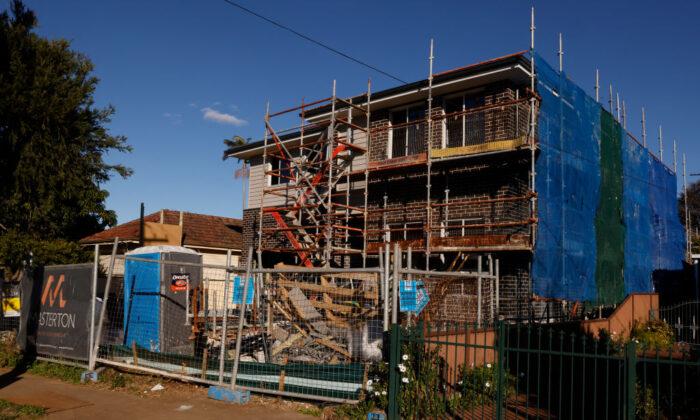An impending slump in exports and diminishing returns on investment threaten Australia’s liquefied natural gas (LNG) industry as global markets head towards a supply glut.
In a new report by the Institute for Energy Economics and Financial Analysis (IEEFA), analysts found that unprecedented increases in low-cost producer supply and weak demand growth contribute to a potential LNG oversupply.
According to Joshua Runciman, IEEFA’s Lead Analyst, global LNG markets are expected to achieve a 40 percent increase in supply until 2028.
With this structural change happening, emerging markets will bear the brunt of moderate demand increases. However, the direction of growth of this demand remains to be seen as it has consistently declined since 2019.
Australia faces an even worse situation moving into the 2030s as the local LNG export market will face challenging conditions.
“Australian LNG producers are likely to become increasingly exposed to the LNG spot markets from 2030, which by then will be awash with uncontracted gas looking for end buyers,” IEEFA Energy Finance Analyst Kevin Morrison said.
At present, Australian LNG exporters sell approximately 75 percent of their LNG supply under long-term sale and purchase agreements (SPAs). However, many of these contracts are set to expire in the succeeding years.
This will result in increased exposure for these exporters to spot markets if they fail to acquire new SPAs. If no new LNG SPAs are secured, Australia’s uncontracted LNG supply could reach 34 million tonnes per annum (MPTA) by 2030 and 89 MPTA by 2040.
An oversupply is expected to drag in future LNG spot prices, which would result in lower returns on investments for any Australian LNG producer with exposure to spot markets.
Uncontracted LNG will soon flood the markets, particularly from low-cost supply produced by Qatar. By 2030, Qatar is expected to have up to 59 MPTA of uncontracted LNG capacity.
“It’s widely expected, including by IEEFA, that future LNG spot prices will fall due to oversupply, which could lower the returns to any Australian LNG producers with exposure to spot markets,” Mr. Morrison said.
This includes contracted and uncontracted LNG volumes, including Santos and Mitsubishi’s 10-year LNG SPA for 1.5 MPTA.
Supply problems also coincide with a shift in buyer demand as major consumers, such as Japan and South Korea, are set to reduce their LNG consumption.
Japan, South Korea’s LNG Consumption to Decline
IEEFA previously said that Japan’s four largest buyers are also experiencing a surplus supply, which they are currently selling into emerging markets in Asia. Its imports have also fallen 8 percent in 2023 to their lowest levels since 2009.A similar trend was seen in South Korea as their imports declined by 4.9 percent relative to 2022 volumes. This trend of falling LNG demand is likely to increase due to South Korea’s commitment to reduce gas consumption.
In Europe, the IEEFA expects LNG demand to peak in 2025 before falling by 11 percent in 2030. Decreasing demand and gas reduction goals in the continent could lead to an LNG surplus of nearly 30 MTPA.
India, Bangladesh, and Pakistan also reported declining LNG imports in 2022 due to unsustainably high prices. On the other hand, China’s LNG supply is projected to face overcontraction by 2030.
These circumstances prompt a switch in the roles these buyers play as they could become LNG sellers. These buyers, who have purchased substantial quantities of LNG from Australia, have invested in gas and LNG infrastructure in third-world countries to increase LNG demand growth.
Japan has already sold more LNG than it bought from Australia from 2020 to 2022. Government targets suggest that Japan could be selling nearly 50 MTPA by 2030, potentially making the country one of Australia’s largest competitors in the LNG market.
Along with high capital costs and low volumes of economic reserves, these challenges suggest that Australian LNG infrastructure projects could fail to reach the end of their useful lives.
The National Energy Resources Australia earlier estimated that the combined liability associated with the decommissioning of existing offshore oil and gas infrastructure at $55 billion, a cost that taxpayers will bear.
These infrastructure include more than 1,000 wells, 11 floating facilities, 57 fixed facilities, almost 5,000 kilometres of offshore pipelines, and 535 subsea structures such as manifolds.
“The development of new gas fields to backfill existing LNG trains could also be at risk, while existing LNG projects may also face cost pressures,” Mr. Morrison said.
“Moreover, tightening domestic supply conditions and a need to maintain social licence will likely see gas that could be exported increasingly diverted to the domestic market.”
Furthermore, all these factors point to a gloomy future for Australia’s LNG export market, with the supply and value of exports expected to decline over the next decade.
The various financial risks that Australian LNG producers face could undermine returns for existing assets and business cases for new developments.
In light of these challenges, Mr. Runciman said Australia must now focus on developing new export markets in which the country could establish a comparative advantage on LNG.
Meanwhile, the Greens criticised the Labor government for the 432.6 million tonnes of carbon dioxide equivalent released in the year to June 2022, up 22.5 percent since 2005, blaming the growth in production and export of LNG.
“At this rate, Labor won’t even meet its own unscientific climate targets, let alone what is needed to tackle the climate crisis,” Australian Greens Leader Adam Bandt said.






